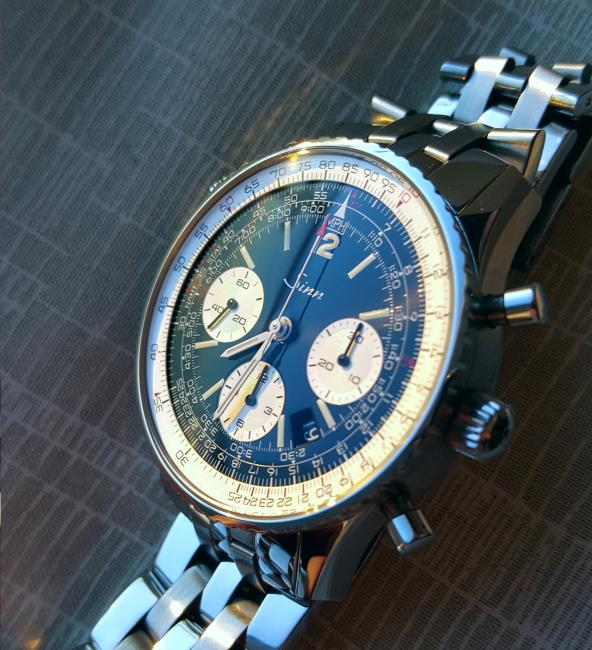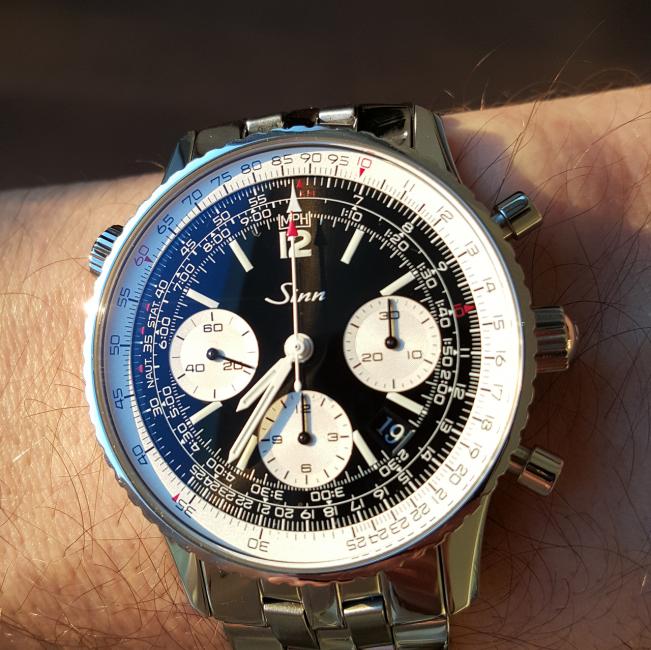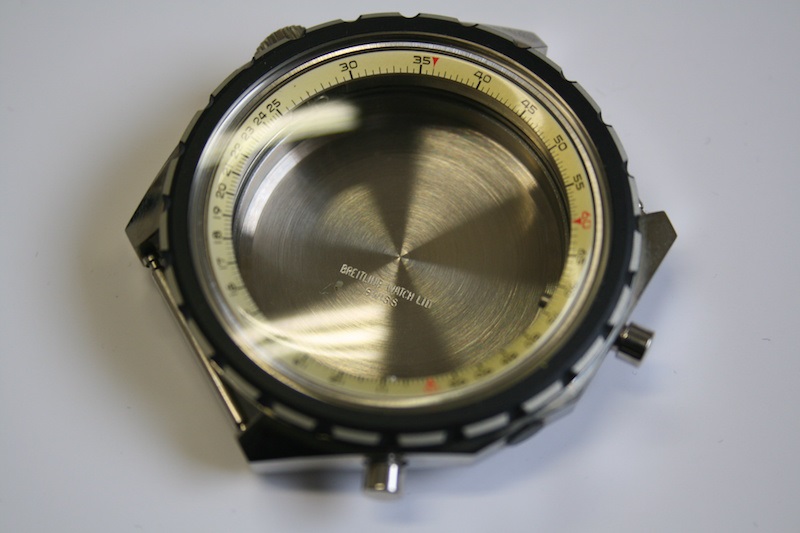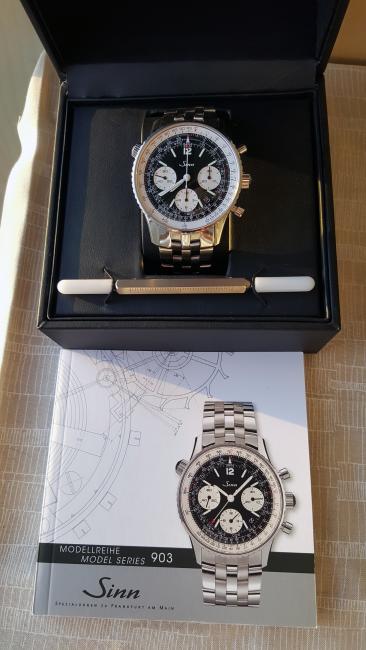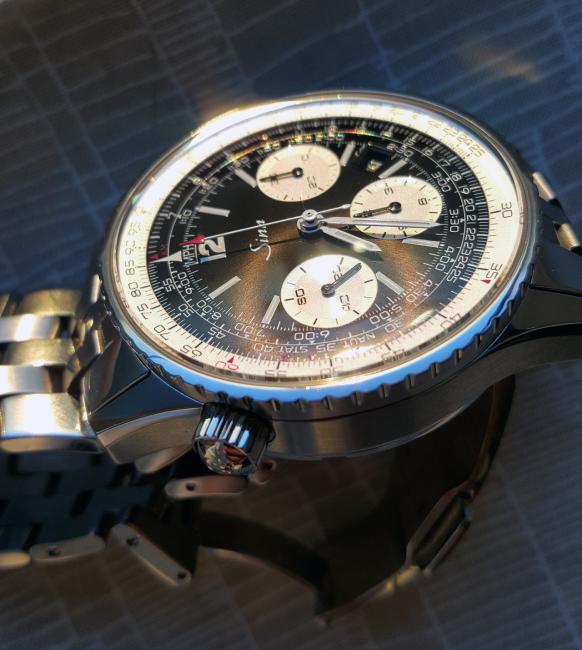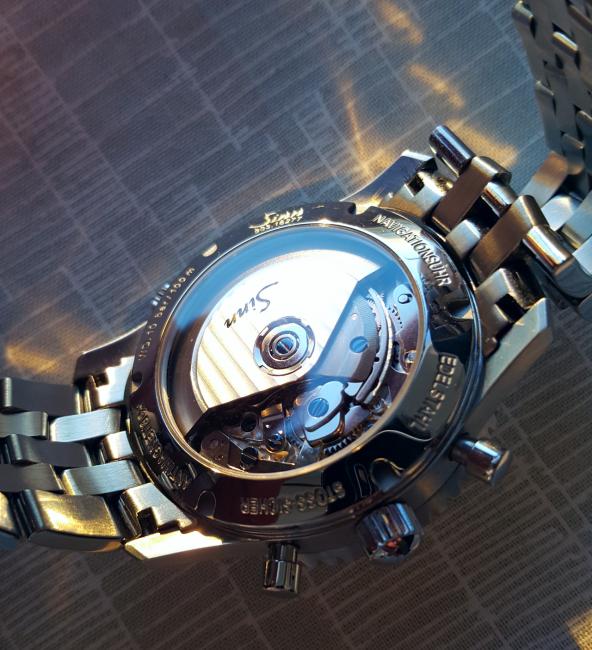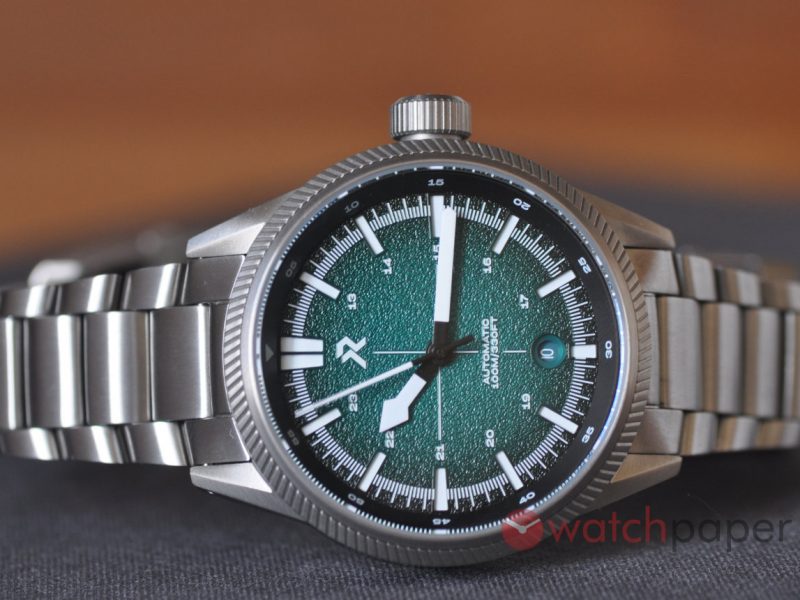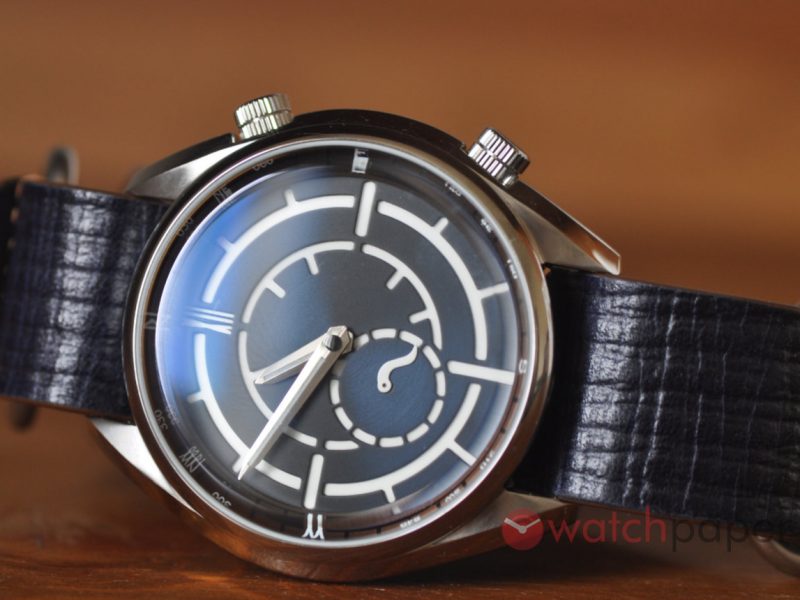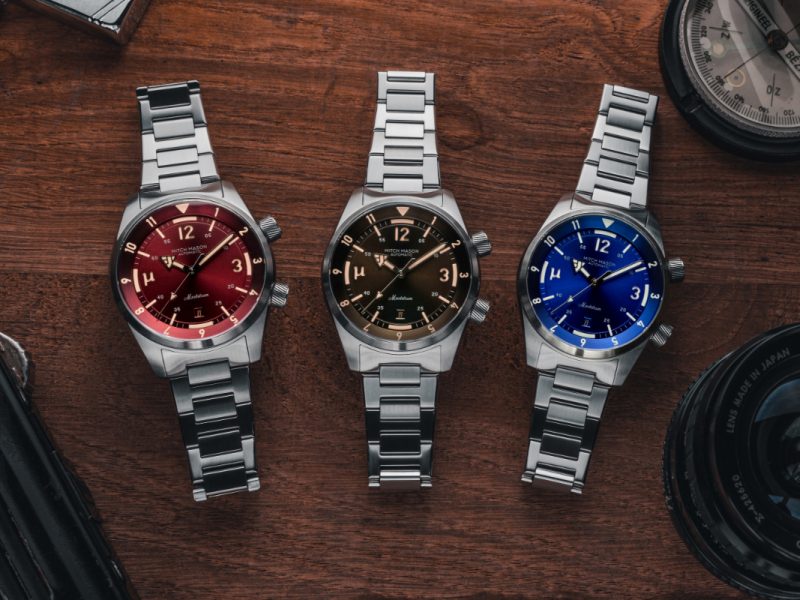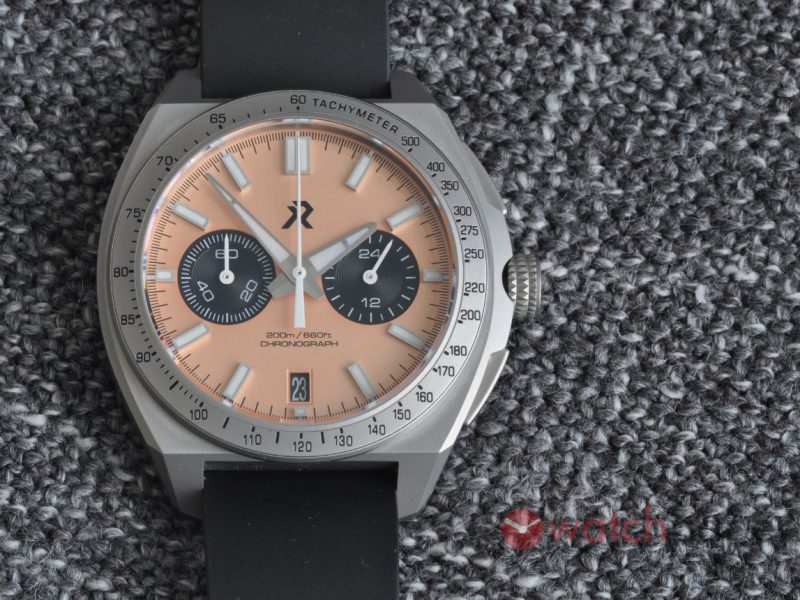Navitimers and Navigation Chronographs
Is the Sinn 903 actually a Navitimer? The short answer is: it depends. The long answer involves a bit of a history lesson, not about Sinn or the 903, but about Breitling’s Navitimer and the company’s fortunes during the late 1970s. Introduced in 1952, Breitling’s iconic Navitimer cemented the company’s association with aviation, producing the Navitimer for AOPA (Aircraft Owners and Pilot’s Association), and created one of the cornerstones of the brand juggernaut that is Breitling today. But things weren’t always rosy for the company (now) from Grenchen. In the 1970s, when the Swiss watch industry was feeling the full effects of the quartz crisis, Breitling fell on hard times, laying off staff and eventually selling to Ernst Schneider, then owner of Sicura. But the story is more complicated than the standard Wikipedia account. I reached Albert Wajs of Ollech & Wajs Watch Company in Zurich where the 85-year-old watch industry veteran recounted his company’s long history with aviator watches and, in particular, his involvement with the Navitimer model.
“Willy Breitling was a gentleman.”
When Breitling was struggling with poor revenues in the late 1970s, Mr. Breitling put his own money into the company to forestall layoffs, but the steady decline in sales of mechanical watches meant that Breitling had to close its doors in 1979. The standard account has it that Sicura and Sinn bought the rights to the Navitimer, but Mr. Wajs expanded on this history: “Mr Schneider bought only the rights to the brand; the stock was sold to Sinn, Ollech and Wajs, and another party. Breitling stock included cases and dials, and we continued to sell watches comprised of these parts, but with the re-branded dials and crowns.”
In fact, to this day, Mr. Wajs continues to sell aviator’s watches made to the pre-1980s specifications. “Breitling became big. In the shadow of that, I have been able to continue selling the design as it was.” When the stock he had purchased from Breitling ran out, Mr. Wajs continued to source cases and parts from the same manufacturer Breitling sourced their stock from. The important point is that Sicura only bought the rights to the brand and not the stock. Sinn bought 500 cases from Breitling when it stopped being Breitling and followed the same model as Ollech and Wajs, selling re-branded Navitimers and then continued to innovate with technology, a process that accelerated when Lothar Schmidt took over Sinn in 1993. When the new Breitling brought suit against Sinn and Ollech and Wajs in the 1990s, the dispute was over the intellectual property rights to the circular slide rule that’s so famously part of the Navitimer’s design. Breitling failed to make its case to stop Sinn and Mr Wajs from selling aviator’s watches with the slide rule feature because they couldn’t prove the design was exclusively Breitling’s intellectual property. In fact, Mr. Wajs’ own watches “were actually inspired by a key-chain slide rule AOPA was selling at the time.” The Navitimer name, however, because a part of the brand, stayed with the reincarnated Breitling.
Since 1961, Sinn has been quietly building a stellar reputation for producing some of the best, no-nonsense, tool watches available for purchase anywhere. You’d be forgiven for not knowing a lot about them in Canada because the official North American distributor is based in the US and has yet to bring its trunk shows here. The opportunity to actually see one on your wrist is rare, and even if you are lucky enough to find a dealer that has one for you to try on, it won’t come with the Authorized Dealer perks like warranty and service. Like Ollech and Wajs, Sinn’s business model has never been heavy on retail presence. From the beginning, Sinn relied mostly on direct sales to customers and what little advertising they did was in specialist publications like the AOPA newsletter, only finally getting around to establishing a storefront close to home in 2015. This lower-overhead model kept margins healthy enough for the company to focus on innovation and quality and it’s these attributes that have made Sinn a quiet hit amongst both aficionados and people who really need a highly durable and functional tool watch. Sinn supplied watches to astronauts, police tactical squads and of course, aviators with its TESTAF-certified series of pilot’s watches. Their credibility was earned the hard way but Sinn’s recent (“surge” would be too strong a word for it) lift in popularity is in no small part due to Swiss brands pricing themselves out of reach. Watch lovers have been forced to hunt for hidden gems amongst the German watch companies and Sinn is part of a short list of manufacturers whose products are only recently receiving the kind of attention they deserve.
Which brings me to the Sinn 903 that landed in my collection late last year. Hard to find, even on the used market, the 903 Navigation Chronograph still suffers from Navitimer envy amongst owners and potential buyers, and forum posts and articles are dominated by “which one should I buy?” threads. Sellers are often at pains to relate the history I detailed above when seeking potential buyers and I admit that I was caught up in this same debate when I decided to get the 903. The Navigation Chronograph comes in three flavours: the 903 (black dial); 903 St B E (blue dial); and the 903 St Silver (self-explanatory). I got the 903 black dial on a bracelet and, frankly, I’ve never been so pleased by an unboxing. Sinn’s packaging is, as you’d expect from a sober German brand, understated but elegant. The sturdy, textured, cardboard outer box houses a soft leather container, a quality strap-changing tool and a sizeable, well laid-out manual. The manual, in German and English, is extensive because it describes who Sinn is as a company (the first 15 pages are a narrative of the company’s story) and devotes a lengthy section to clearly laying out how to use the slide rule features that are the original raison d’etre for the watch.
The 41.5mm case features a high polish on all upward-oriented surfaces and a lightly brushed, almost satin finish on the horizontal-facing surfaces. The 14.5mm high case sits a little tall on the wrist because it has to accommodate the slide-rule scale it houses. Topped by a domed sapphire, anti-reflective crystal, the watch’s bezel is grooved to look like you could grab and rotate it, but that’s an illusion. Calculations are accomplished via the crown at 10 o’clock and an internally-rotating scale. The action on that crown is smooth, if a little heavy. Pray that any calculations you need to perform aren’t done in an emergency. First, you need to figure out how to use that scale properly to do the life-saving calculations and, second, the crown placement at 10 means you have to use both hands to manipulate the scale to line up the right markers. At this point, even assuming you are whiz with the pre-calculator, you’ve probably crashed your plane. The real highlight of the watch is its dial. Crowded with markings that comprise the slide rule, the watch screams ‘technical’ and the slim hands can make telling the time challenging for aging eyes. But from an aesthetic standpoint, the 903’s face is a satisfying exercise in balance, texture, and colour. The dial is laboriously produced through a 35-step process involving electroplating with nickel for the face and silver for the markers.The resulting black portions are creamy with barely noticeable but beautiful intermittent radial crackling, adding to the almost velvety texture. The black face is punctuated by a raised 12 in Arabic with stick hour indices and a small seconds dial at 9 and two totalizers at 3 and 6 respectively. The subtle date window sits at 4:30 and its colour scheme matches the overall white-on-black colour scheme of the dial. The screw-down display caseback shows off a largely monochrome, but decorated rotor and movement.
Faithful to the late-70s Navitimer design, the 903 is backed by seriously impressive and not-so-70s technical specifications: the SW 500 movement beats at 28,800 oscillations per hour and the watch comes with 100m water resistance as well as negative pressure resistance and is shock and magnetism protected to DIN (Deutsches Institut für Normung) standards. In other words, it has the modern Navitimer beat in every category and at a price that’s less than half of what you’d pay for the Breitling. There’s still a current of opinion that resists factual arguments in favour of the Sinn for the authenticity and heritage of the Breitling Navitimer. The problem with this hesitation, I discovered, is that the Navitimer at the Breitling boutique is not a Breitling either, it’s a Sicura that’s been re-branded. That’s a harsh formulation, but the history you think you are getting with the Breitling ended in 1979 when Willy Breitling sold the company. The Sinn 903 and the aviators sold by Ollech and Wajs are, in fact, truer incarnations of that last Breitling Navitimer than the (very nice) watches being sold today under that name.


